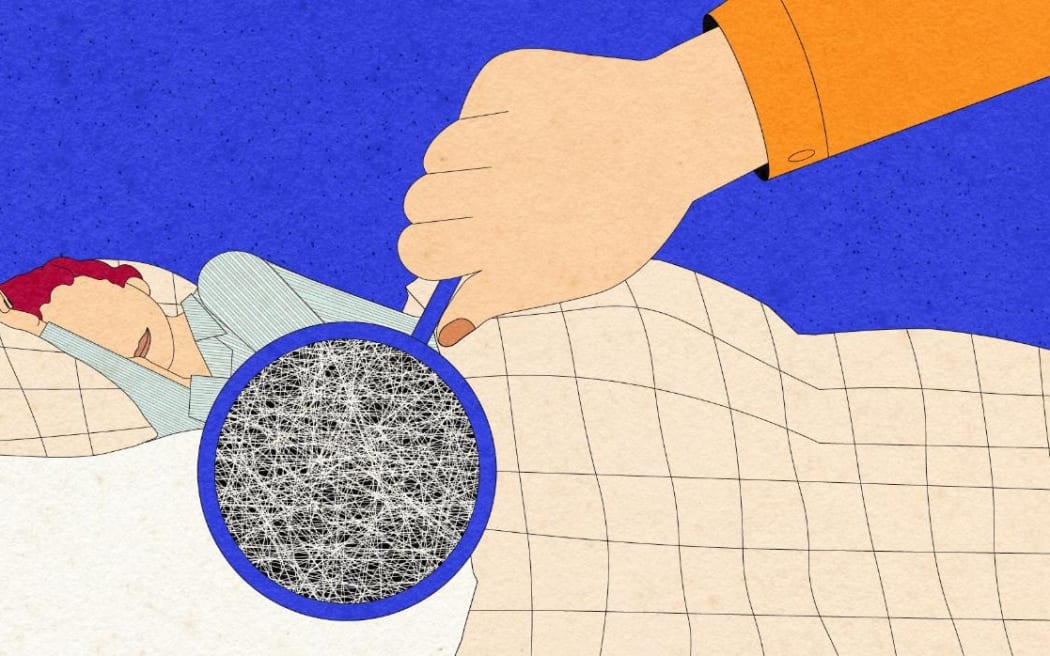
Photo: Stuff / Sungmi Kim
An Auckland family that suffered months of unexplained skin irritations and respiratory problems believes their mattress was to blame. The company which makes them says the product is safe. Paula Penfold investigates.
Sarah* said she had never had skin problems until "crazy rashes" appeared last year.
Her children also developed angry-looking lesions and unexplained blood noses. Her daughter had a rash on her face for three months.
Sarah's husband was sneezing all the time and had an "old man's cough". When he went away for three days the cough disappeared, and they realised it must be related to their home environment.
But they could not figure out what exactly - although there was one clue.
"Because I had so many sores on my feet we thought it must have been from our bed," Sarah said.
And then she remembered a TikTok video she had previously seen and thought nothing of, so she looked it up again.
"If you have a mattress, especially a memory foam mattress, you need to listen to this because I'm dealing with the craziest whacky s--t now," the American woman said. "I decided to take the cover off and wash it. Turns out my mattress has fibreglass in it. I remove the cover, I see these little weird things, I thought they were feathers. And now there is fibreglass all over my apartment. Every surface, all my clothes, my furniture, f---ing covered in fibreglass."
The TikToker's advice: do not remove the mattress cover.
But Sarah already had, several times. In fact, it was one of the reasons she had bought that particular mattress: it was marketed as having a washable cover, and, given she had two children under five and another on the way, it made practical sense.
Sarah believed glass fibre particles - commonly referred to as fibreglass, though it is nothing like the product you would think of for wall insulation, or for making boats - had caused her family's health problems.
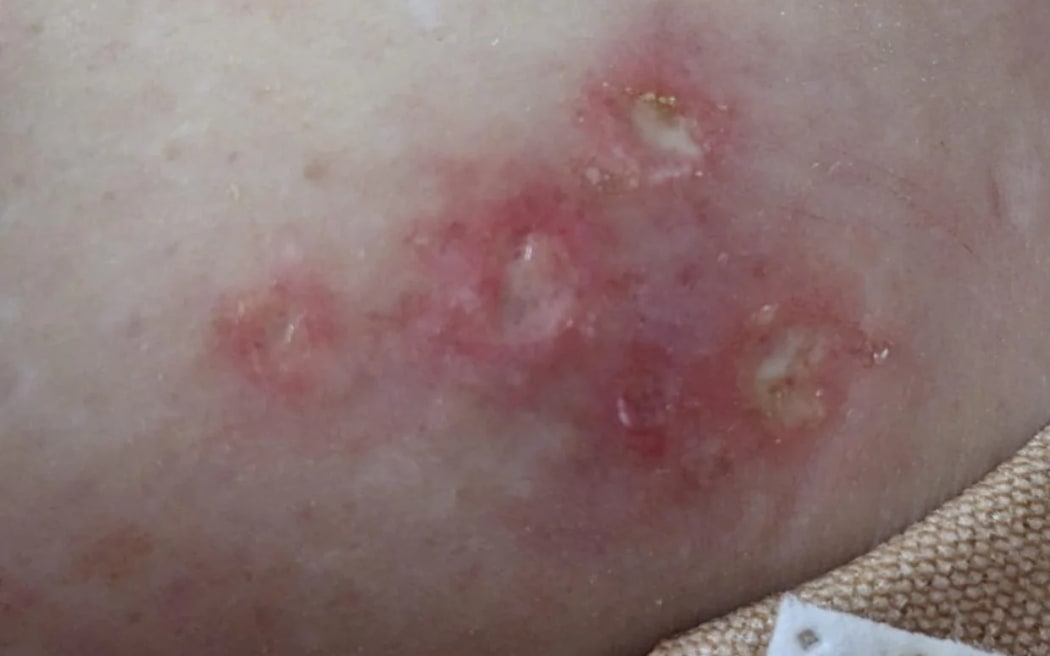
One of the rashes Sarah experienced which she says was caused by glass fibres from her mattress. Photo: Supplied
Notes from a visit to Sarah's GP record "fibreglass dermatitis from her mattress ... she has had a number of red, purulent lesions all over her body ... continued angry, erythematous lesions".
She has been referred to a dermatologist who could formally give that diagnosis, but there is a six to 12-month wait for an appointment.
In the meantime, there was no conclusive proof of the link, and the mattress company, Winkl, said its product was safe.
Founder Simon Sheterline told Stuff: "What you've identified is something that may look like there are significant risks but it's not what it seems.
"In terms of the US situation, it is very difficult to assess the differences as there are many different fibre blends and weaves produced by numerous manufacturers."
The "US situation" is a class-action lawsuit against a "bed-in-a-box" manufacturer being settled out of court, with other lawsuits still playing out.
But in New Zealand, the issue has barely been discussed.
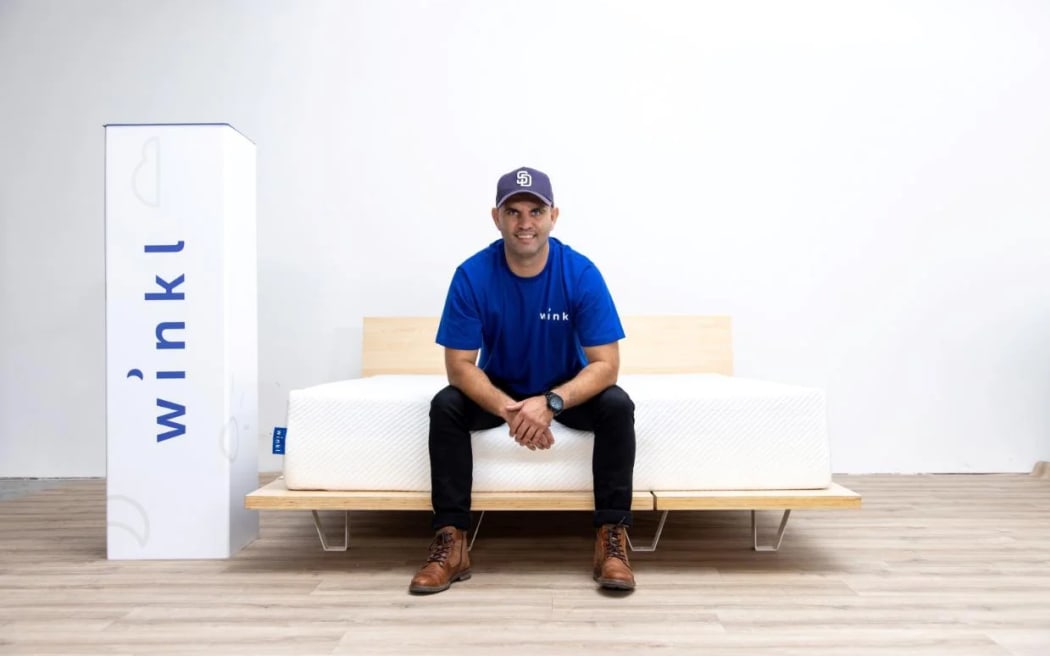
Simon Sheterline, founder and director of bed-in-a-box mattress company Winkl. Photo: Supplied
What's the background?
The foam in mattresses is highly flammable but there are no mandatory standards in New Zealand for fire retardation.
"That's crazy," said Winkl on its website. "So we've taken it upon ourselves to encase our mattresses in a fire-retardant sock. The sock is made up of a unique blend of fibres designed to interrupt the combustion process in the event of a fire, and eliminates the need to include harmful chemical fire retardants in our foams ensuring you get a safer sleep."
"Glass fibre" does not appear on Winkl's website, or on the mattress label, but that is what the product was.
It can be safe, as long as the material remains contained. But if disrupted, the fibres can become airborne.
The particles are miniscule and almost translucent; they look a bit like tiny plastic threads or feathers, finer than a hair, so once airborne they settle across surfaces all over the home and you probably would not even know they are there.
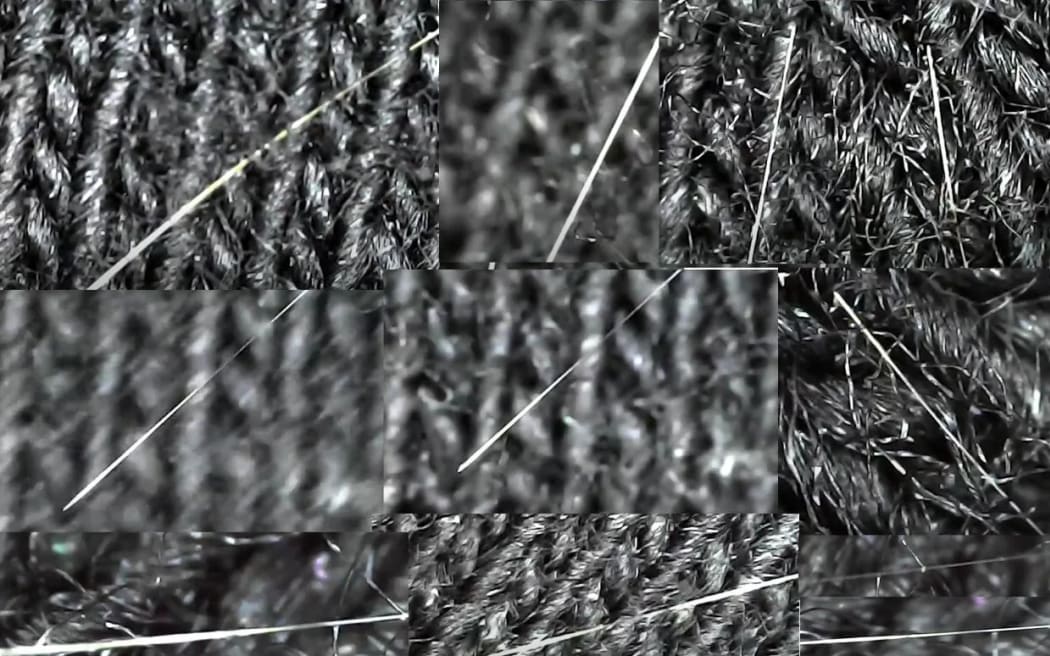
Glass fibre fragments captured under a digital microscope. Photo: Ryan Bellotti / Stuff
And consumers are left in a regulatory no-man's land, because any company using the product is not breaching any New Zealand regulations since there are not any for this specific usage (although MBIE says consumers with concerns should contact its product safety team).
What are the health implications?
Glass fibres are a known respiratory, skin and eye irritant, and asthmagen. They can cause skin irritations that start with itching, redness and rashes, which can lead to lesions.
There can be coughing, sneezing, wheezing and shortness of breath as the body tries to get rid of the material from the upper airway.
Sarah's research led her to the Mattress Fibreglass Support & Awareness group. Reading through the comments and photos she was sure she had finally found what was making her family sick.
Ryan Bellotti is co-founder of that support group, which he administers from Arizona. He stresses to Stuff that it is not an official organisation: "We are not experts or professionals, nor do we act as such" and that there are potential differences in regulations and situations between the US and NZ. After his own "harrowing experiences ... and a gruelling clean-up process", he wanted to help others dealing with the issue.

Co-founder of the Mattress Fibreglass Support and Awareness Group, Ryan Bellotti. Photo: Ryan Bellotti / Stuff
"The consequences extend beyond physical discomfort, impacting wellbeing, mental health, relationships, finances, work, and even the lives of your pets," Bellotti said.
Sarah said the tiny escaped fragments affected her skin, her children's skin, her husband's upper airways, and were everywhere through their house.
While they are almost invisible to the naked eye, if you know what you are looking for you can find them, more easily at night with a blue-toned (not yellow light) torch. Sarah has dozens of photos and video of the individual shards being picked up with tweezers.
She has also kept an album of her family's health, which Stuff has seen, but which she does not want shown publicly. It shows various lesions all over her own body, as well as rashes on her children's bodies and faces.
Sheterline, an ex-KPMG business strategist, founded Winkl after a bad bed-buying experience, tapping into a strategy that was working well in the US, selling mattresses online "in a box".
He told a KPMG alumni magazine that he was inspired by a US mattress company called Tuft & Needle.
"They'd achieved a $100m run rate in the first few years," he said. "We figured if we could emulate what Tuft & Needle were doing in New Zealand - and put our own fit-for-market spin on their approach - we could probably change the industry a bit and give the big boys a run for their money."
(Tuft & Needle makes a budget mattress called Nod which is available in New Zealand through an international shopping site. The website acknowledges the mattress has a fibreglass inner cover.)
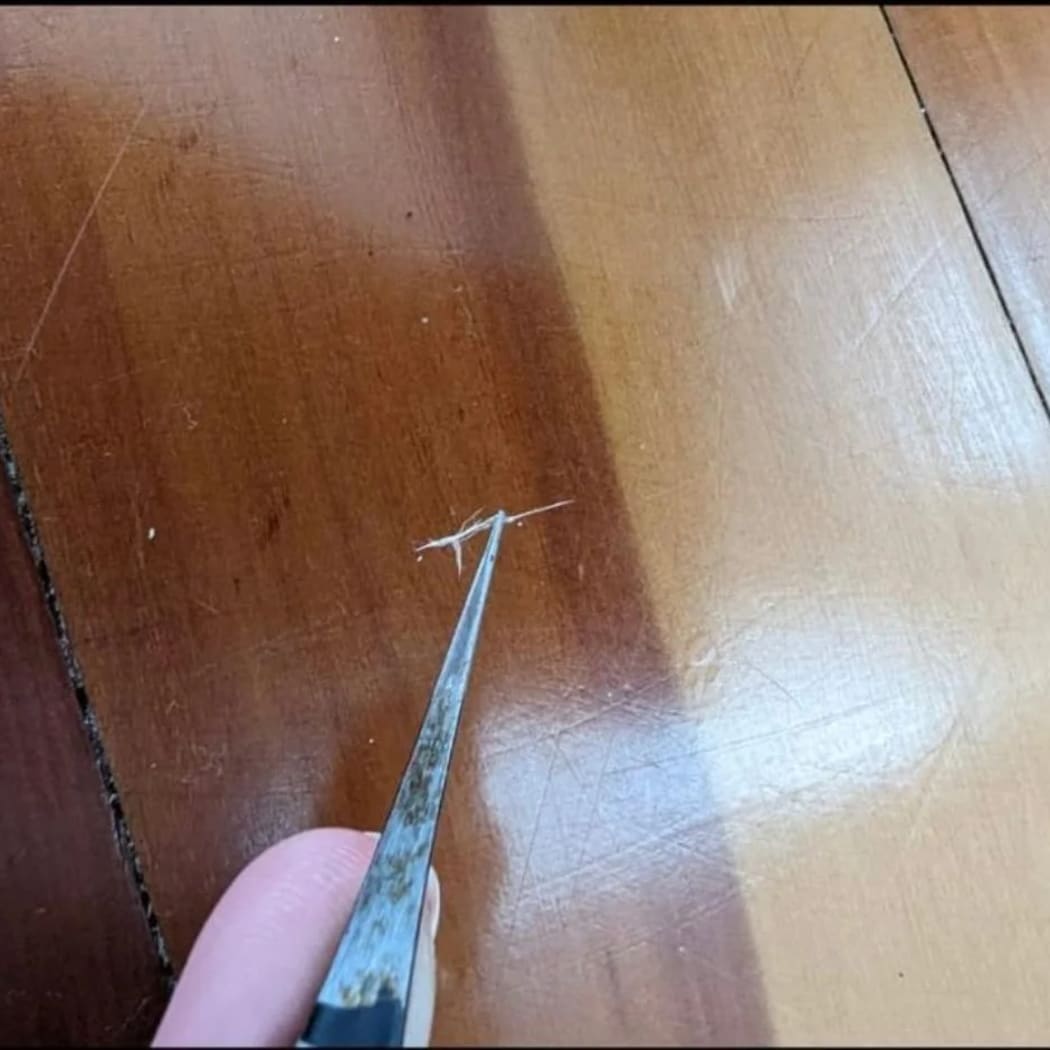
The biggest fibreglass shard Sarah says she pulled out of her leg. Photo: Supplied
Winkl mattresses are designed in New Zealand and made in China.
At first, in a phone call, Sheterline said: "Our products don't have fibreglass in them".
When Stuff pointed out the company's customer services response had already acknowledged the use of "a fibreglass blend", Sheterline said, "We no longer have that product in our mattress, because we could no longer source it".
He disputed the product in Sarah's mattress was the cause of her family's health concerns. "Our extensive research ... found the fibres were not hazardous in any way and posed no health risk."
In a written response to further questions from Stuff, Sheterline said the product was a "specially produced fibreglass known as CFGF", with fibres at least double the diameter of World Health Organisation guidelines for respirability. (Definitions are important: 'respirable' means able to be drawn into the lungs, whereas 'inhalable' means particles too large to enter the lungs but able to enter the upper airways.)
He did not answer Stuff's questions about whether the product could have been responsible for skin irritations leading to lesions.
However, manufacturers of CFGF (Continuous Filament Glass Fibre) list a variety of possible risks from exposure including eye, nose and throat irritations, and skin irritations. They advise to avoid contact with skin, eyes and clothing.
Sheterline said the product had been discontinued last year by the manufacturer who had to source new fire retardant materials due to supply issues.
He said that of the 10,000 mattresses Winkl had sold in New Zealand over three and a half years, there had been five complaints from customers, and "three of those were because customers had used the mattress for means it was not designed for".
(In the earlier phone call, Sheterline said Sarah had "tried to clean it with some sort of scrubbing brush". Sarah said that did not happen. "I can confirm I never scrubbed at the mattress. Any degradation of the fibres would have been from normal wear and tear over a two-year period.")
For those not happy with the product, Winkl offers a 120-day returns policy: money back, and the returned mattress is then donated to the Salvation Army.
On the day Stuff checked Facebook Marketplace, there were more than a dozen Winkl mattresses for sale, including one described as in "really good condition, cover gets washed regularly".
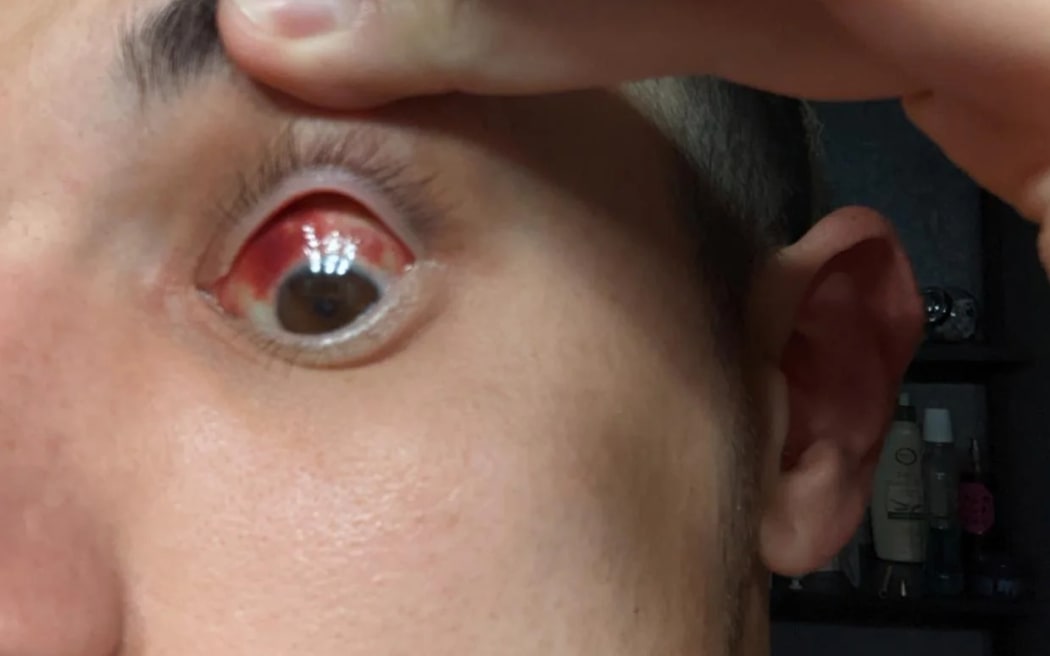
Conjunctivitis from fibre contamination was one of the symptoms for Ryan Bellotti. Photo: Ryan Bellotti / Stuff
Sheterline said Winkl did "everything possible to assist (Sarah's family) including providing a refund, collecting the mattress, offer of a new mattress, and arranging a commercial decontamination and residential cleaner".
Sarah said she was not satisfied with the level of clean on offer and eventually, with the help of her insurance company, her home underwent a full environmental clean, at a cost of about $30,000.
Most of the family's contents needed to be thrown away or replaced, costing tens of thousands more.
"The financial burden of home remediation is substantial," Bellotti said. "Families often find themselves forced to discard belongings, making the situation a true nightmare."
In spite of the legal actions playing out in the US, there has been no national response.
"Despite numerous complaints," Bellotti said, "no warnings have been issued to consumers regarding the dangers of removing mattress covers or the consequences it could entail, including health issues and home contamination."
In 2023, the California Legislature passed a state-wide ban on the sale of mattresses containing textile fibreglass, which would take effect in 2027.
"It sets a precedent for nationwide action," Bellotti said.
Dr Jonathan Smith, the chief executive of Auckland testing and analysis company Optimech, said: "There's a reason there are moves internationally to legislate.
"I think this product in mattresses should be banned," Smith said..
"But there's a practical aspect of, if you've already got one, how do you deal with it? Ideally, you should leave the manufacturer's cover on, and never remove it even if it does say it's washable, and then add a separate protective cover."
Bellotti reiterated that advice.
"Do not remove your mattress cover! This can release the fibres into the air and contaminate your living space very quickly. If you have an issue, it's important to act quickly. Seek medical attention if needed and inform healthcare professionals about the potential exposure."
It is now six months on and Sarah's lesions have almost healed. (*Sarah is not her real name: the "living hell" has left her so stressed she wants her identity kept private.)
"I was having antihistamines every day as a result of my 'seasonal allergies' as well as antihistamine eye drops. But I haven't had any since the deep clean.
"We have literally noticed such a massive improvement in our health as a family now, so at least that's a good thing."
- Stuff


